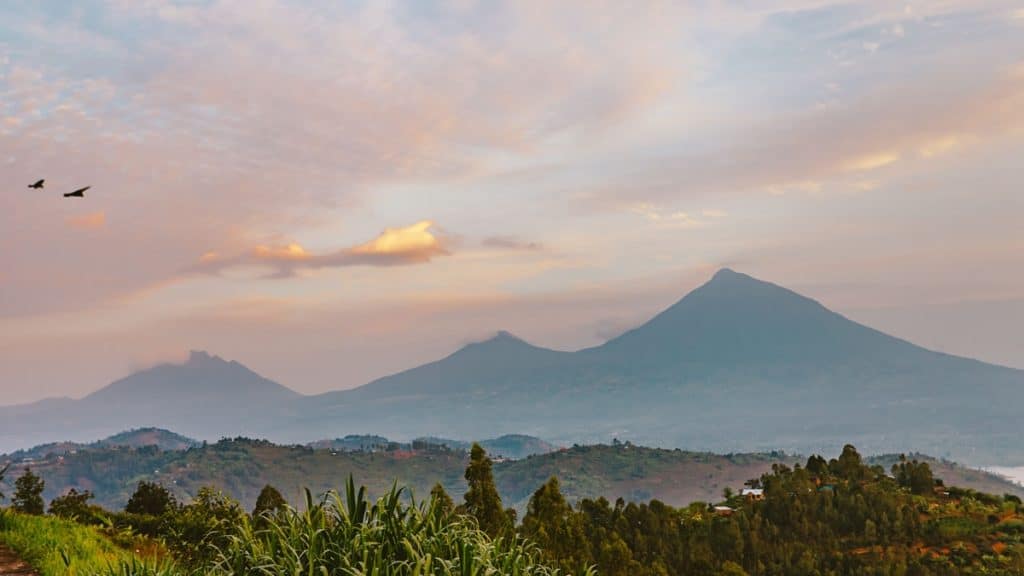The Volcanoes National Park is a UNESCO World Heritage site located in the northwestern part of Rwanda along the border of the Democratic Republic of Congo next to Virunga National Park and Mgahinga Gorilla National Park of Uganda. Stretching over an area of 160 square kilometers, the park is renowned for providing a home to overhalf of the world’s population of endangered mountain gorillas, making it one of the most popular tourist destinations in Rwanda and Africa at large. Apart from gorilla trekking, Volcanoes National Park Rwanda is also known for its diverse species including golden monkeys, mammals, birds, and several volcanic mountains.
Before visiting Volcanoes National Park Rwanda, it’s crucial to be well-prepared to ensure a safe, enjoyable, and responsible experience. Here are eight things to know before visiting Volcanoes National Park:
Entry Fees and Permits
Make sure to understand the entry fees and permit requirements before you visit. Activities like hiking, gorilla trekking, or camping may have varying fees. It’s essential to secure permits well in advance, especially for gorilla trekking, as they have limited availability.
Note: Rwanda gorilla permits cost USD 1,500 per foreign none resident, and this price includes an encounter with the amazing mountain gorillas and park entrance. A chimpanzee tracking permit cost $150 per foreign none resident. Unfortunately, unlike gorilla trekking, a chimpanzee tracking permit does not cover park entrance and for that reason, it is wise to budget for $250 for a chimpanzee tracking permit. This will cover the chimpanzee permit and park entrance.
Altitude and Climate
Volcanoes National Park is situated at a high altitude, which can affect visitors, particularly those not acclimatized to such conditions. The climate can also vary, with temperatures dropping significantly, especially at higher elevations. Pack appropriate clothing layers and be prepared for sudden weather changes.
You can also simply take a few days relaxing at one of the lodges in Volcanoes national park before setting out for gorilla trekking. Relaxing at the lodge for a day or two in a volcanoes national park lodge will give you some time to acclimatize.
Physical Fitness and Health
Some activities in the park, such as gorilla trekking, involve trekking through dense forest terrain and steep slopes. Therefore, you are advised to assess your physical fitness level and any health concerns before planning your visit. Consult with your healthcare provider if you have any pre-existing medical conditions.
However, in the case of gorilla trekking, you can ask for families that are particularly close to the inception point. Whether you are elderly or not, you ask the tour operator to organize for you permits of a particular gorilla family that is believed to be residing near the briefing point during the time of your trekking.
Conservation and Wildlife Etiquette
The Volcanoes National Park is renowned for its mountain gorilla population. When interacting with wildlife, adhere to strict guidelines to ensure both your safety and the well-being of the animals. Maintain a respectful distance, follow ranger instructions, and avoid direct eye contact with the gorillas.
Failure to observe the gorilla trekking guidelines does not only put your life in danger but also the life of your fellow trekkers as well as the mountain gorillas. Though the game rangers are always armed, the safety of the animals is also very important.
Cultural Sensitivity
Volcanoes National Park is not only home to diverse wildlife but also to local communities. The park is surrounded by Ibyiwacu Cultural Village/Gorilla Guardian Village, and thus you are expected to respect the cultural norms and traditions of the indigenous people living within. Engage with them respectfully and seek permission before photographing or interacting with locals.
Avoid getting into discussions regarding the genocide since many people have never healed from that terrible incident. Do not ask people about their tribes since tribes are also a sensitive issue in Rwanda.
Packing Essentials
Along with appropriate clothing for varying weather conditions, essential items to pack include sturdy hiking boots, insect repellent, sunscreen, a hat, water bottles, and snacks. Also, bring a camera with extra batteries and memory cards to capture the breathtaking landscapes and wildlife encounters.
However it is important to note that though a camera is recommended, you can merely use your phone camera to capture the moments.
Environmental Responsibility
During park activities like hiking, nature walking, and gorilla trekking experiences, practice Leave No Trace principles to minimize your impact on the park’s fragile ecosystem. Avoid littering, stay on designated trails, and refrain from feeding or approaching wildlife. Respect the natural environment to help preserve it for future generations to enjoy.
The most dangerous of all animals is the forest elephant. In case you encounter one during your forest walk or gorilla trek, ensure to remain behind a game ranger who often fires scare shots to ensure that the elephant does not attack.
Best Time to Visit Volcanoes National Park
The best time to visit Volcanoes National Park is during the dry season (June to September and December to February) when trails are less slippery. The rainy season has its advantages too, as the scenery is more beautiful with greener grass and there are fewer crowds, providing a more private experience.
It is important to note that Volcanoes National Park can be visited throughout the year. All activities take place regardless of the season or whether it is a public holiday.
By familiarizing yourself with these key aspects before visiting Volcanoes National Park, you can ensure a safe, enjoyable, and responsible experience while exploring this remarkable natural wonder.
